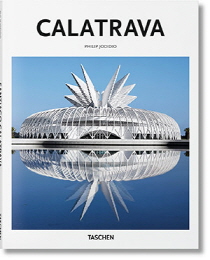Through buildings of culture, science, and faith, and across his many famous bridges, explore the neofuturistic structures of Santiago Calatrava. This compact introduction explores the architect’s unique fusion of organic forms, deft engineering, and dramatic, aerodynamic impact.
Spanish visionary Santiago Calatrava is renowned around the world as an architect, structural engineer, sculptor, and artist. Famed for bridges as much as buildings, he has made his name with neofuturistic structures that combine deft engineering solutions with dramatic visual impact.
From the Athens 2004 Olympic sports complex and the Museum of Tomorrow to the Peace Bridge in Calgary, Alamillo Bridge in Seville, and the Mujer Bridge in Buenos Aires, Calatrava’s creations show particular interest in the meeting point of movement and balance. With influences ranging from NASA space design to da Vinci’s nature studies, the structures dazzle with a sense of lightness, agility, and aerodynamism, but always with a graceful poise amid their particular surroundings.
This compact introduction explores Calatrava’s unique aesthetic with key projects from his career, from early breakthroughs to his most recent work. Through buildings of culture, science, faith, and across his many famous bridges, we explore his integration of organic forms and human movements, and a uniquely fluid futurism, soaring towards tomorrow.
Basic Architecture 시리즈의 특징
이 시리즈는 타셴의 Basic Architecture의 각 권을 특집화한 것으로, 다음을 담고 있다.
해당 건축가의 생애와 작업에 대한 소개
연대순으로 나열된 주요 작품 소개
의뢰인에 대한 정보, 건축학의 전제조건, 건축학적 문제와 그에 따른 해결법
선별된 작품의 목록과 가장 유명한 건물의 위치를 나타내는 지도
약 120가지의 삽화 포함(사진, 스케치, 초안, 설계도 등)
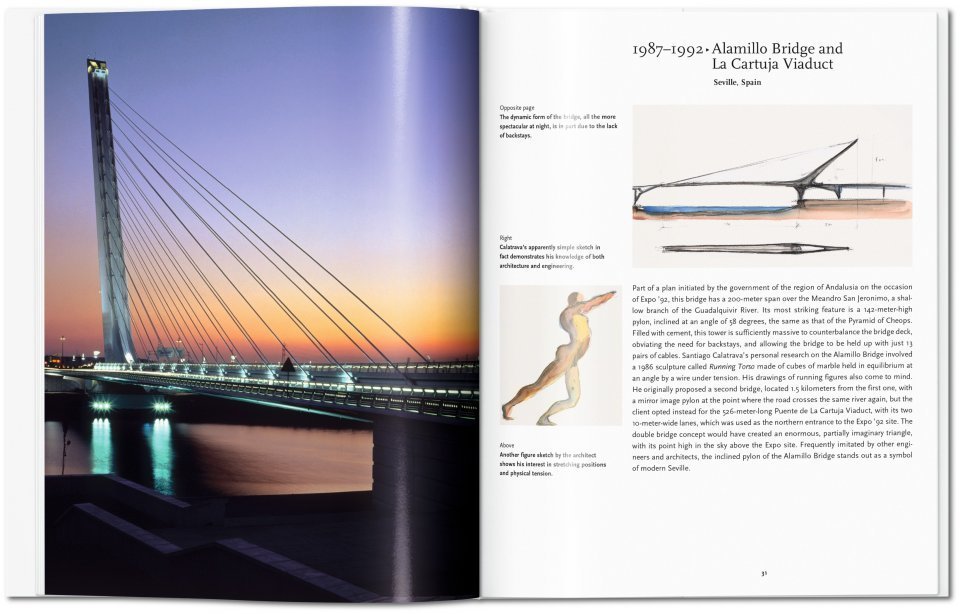
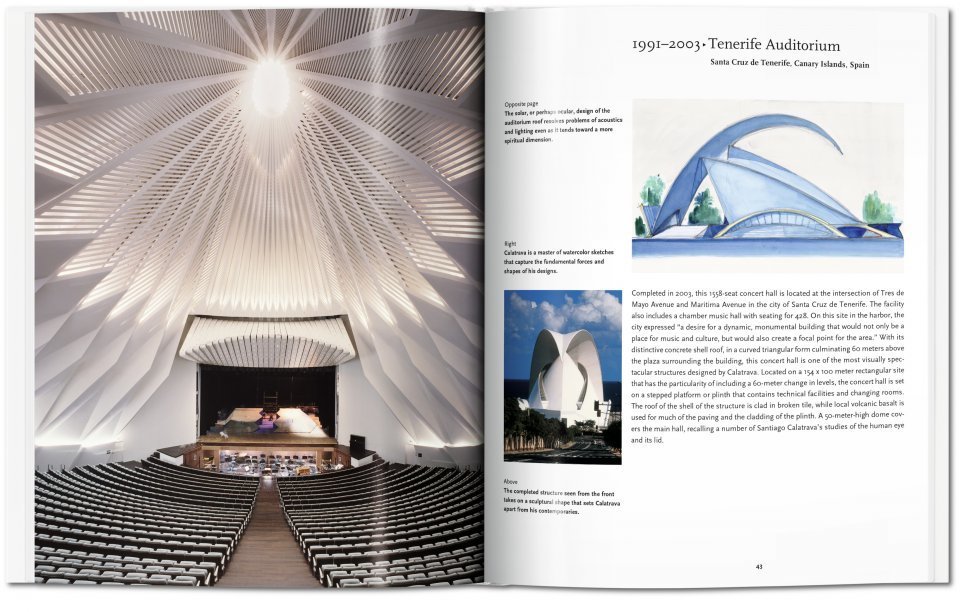
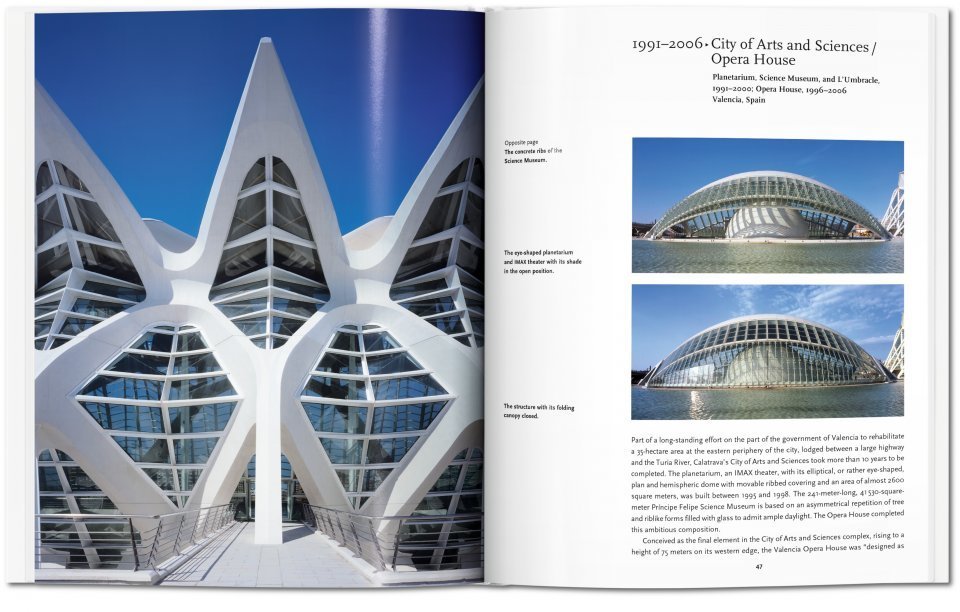
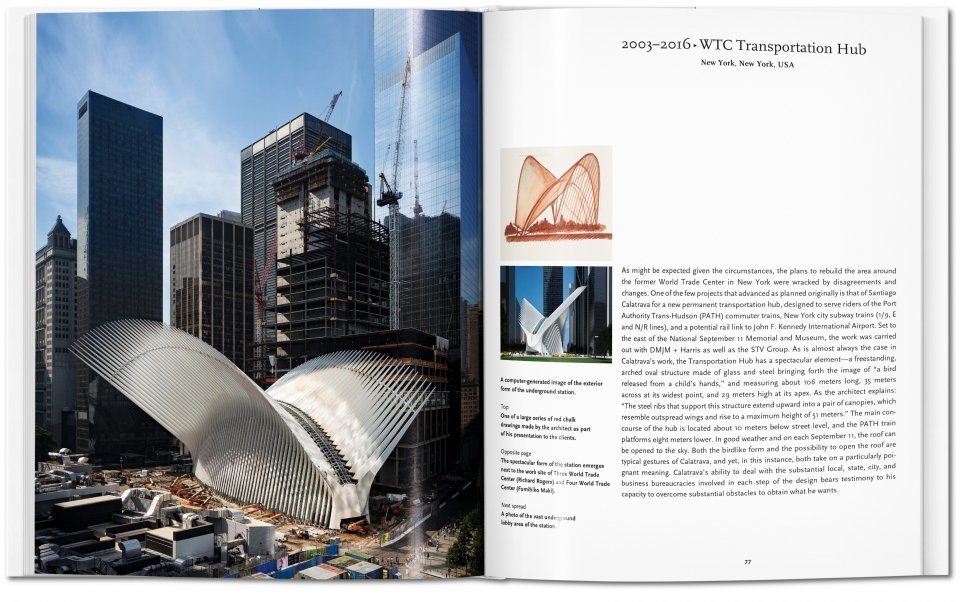
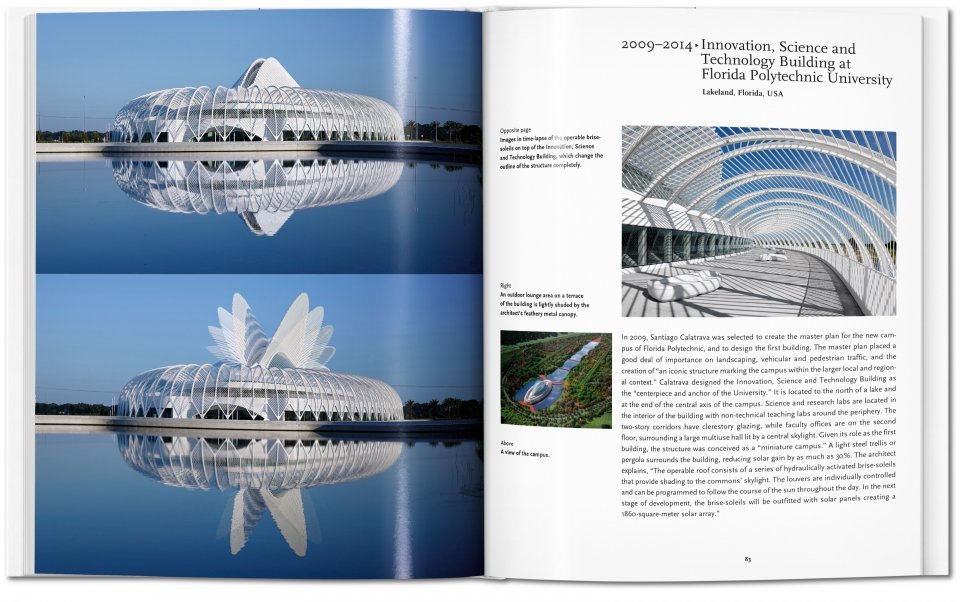
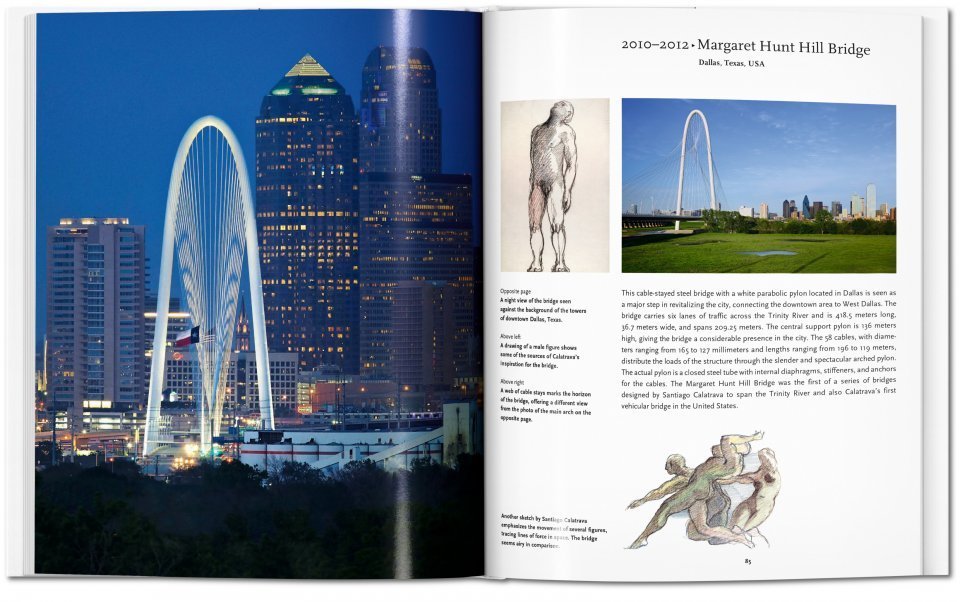
Spanish visionary Santiago Calatrava is renowned around the world as an architect, structural engineer, sculptor, and artist. Famed for bridges as much as buildings, he has made his name with neofuturistic structures that combine deft engineering solutions with dramatic visual impact.
From the Athens 2004 Olympic sports complex and the Museum of Tomorrow to the Peace Bridge in Calgary, Alamillo Bridge in Seville, and the Mujer Bridge in Buenos Aires, Calatrava’s creations show particular interest in the meeting point of movement and balance. With influences ranging from NASA space design to da Vinci’s nature studies, the structures dazzle with a sense of lightness, agility, and aerodynamism, but always with a graceful poise amid their particular surroundings.
This compact introduction explores Calatrava’s unique aesthetic with key projects from his career, from early breakthroughs to his most recent work. Through buildings of culture, science, faith, and across his many famous bridges, we explore his integration of organic forms and human movements, and a uniquely fluid futurism, soaring towards tomorrow.
Basic Architecture 시리즈의 특징
이 시리즈는 타셴의 Basic Architecture의 각 권을 특집화한 것으로, 다음을 담고 있다.






The author
Philip Jodidio studied art history and economics at Harvard, and edited Connaissance des Arts for over 20 years. His TASCHEN books include the Architecture Now! series and monographs on Tadao Ando, Norman Foster, Renzo Piano, Jean Nouvel, Shigeru Ban, Oscar Niemeyer, and Zaha Hadid.
The editor
Peter Gössel runs an agency for museum and exhibition design. He has published TASCHEN monographs on Julius Shulman, R. M. Schindler, John Lautner, and Richard Neutra, as well as several architecture titles in the Basic Art series.
Philip Jodidio studied art history and economics at Harvard, and edited Connaissance des Arts for over 20 years. His TASCHEN books include the Architecture Now! series and monographs on Tadao Ando, Norman Foster, Renzo Piano, Jean Nouvel, Shigeru Ban, Oscar Niemeyer, and Zaha Hadid.
The editor
Peter Gössel runs an agency for museum and exhibition design. He has published TASCHEN monographs on Julius Shulman, R. M. Schindler, John Lautner, and Richard Neutra, as well as several architecture titles in the Basic Art series.





